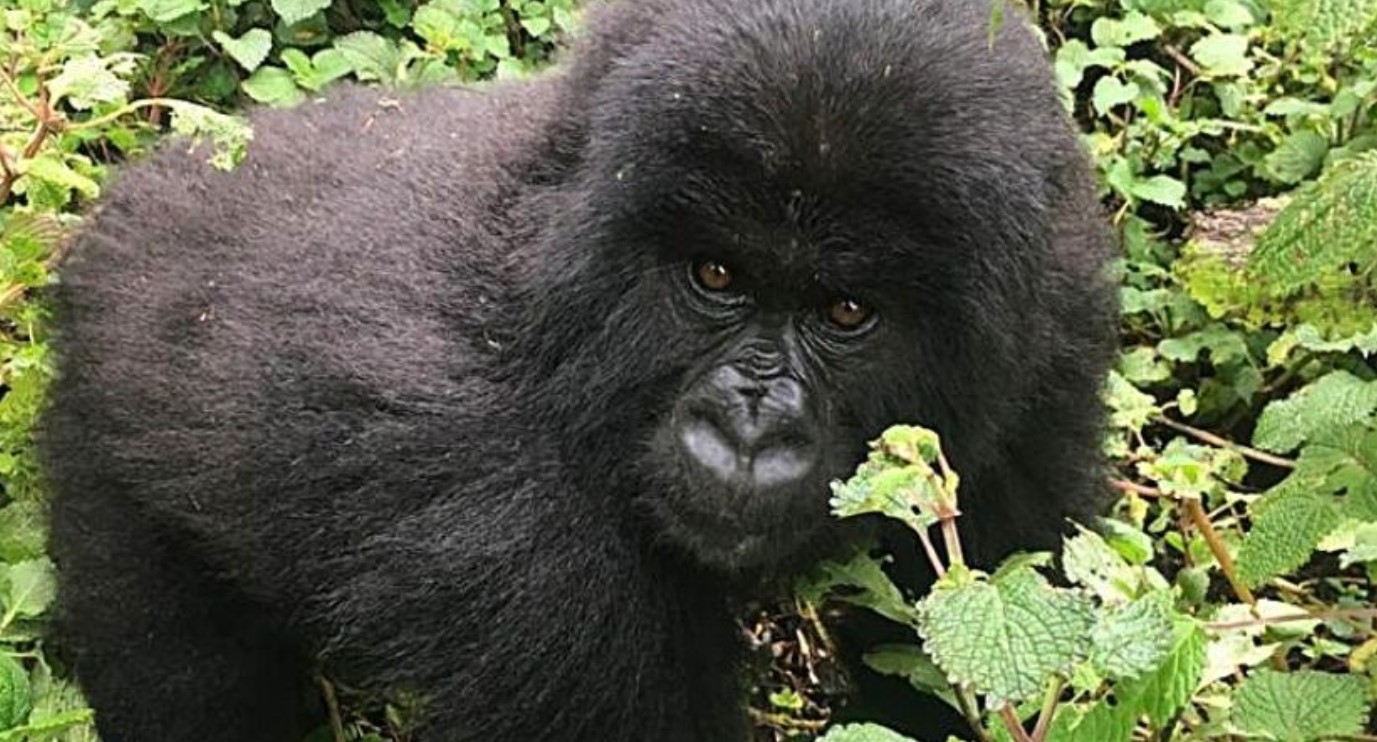
Post-gorilla Trekking Activities in Rushaga
Post-Gorilla Trekking Activities in Rushaga: One of the four sectors of Bwindi Impenetrable Forest National Park where mountain gorilla trekking is conducted is Rushaga Sector, which is situated in the park’s southern region. Buhoma, Nkuringo, and Ruhija are the other Bwindi regions where mountain gorilla trekking is conducted. There are trekking-friendly gorilla families in the area, including the Nshongi, Mishaya, Bweza, Busingye, and Kahungye. The only gorilla family in Rushaga that is accessible for habituation is the Bikingi family.
Some of the post-gorilla trekking activities in Rushaga sector
Although gorilla trekking is the top most popular activity in Rushaga Sector, the park also offers post-gorilla trekking activities in Rushaga Sector, as discussed below:
Gorilla habituation.
Following the post-gorilla trekking activities in Rushaga, it is only possible for travellers to do gorilla habituation in Rushaga following gorilla trekking if you have already secured a habituation permit. You should reserve both the gorilla trekking and habituation permits at the same time because they need to be purchased before you enter the country. The gorilla habituation permits cost $1500 for non-foreign residents, $1000 for foreign residents, and UGX750,000 for East African citizens.
Only those with a trekking permit are allowed to engage in the gorilla habituation program, which allows visitors to spend four hours with a separate gorilla family following a day of hiking. There is only one group, the Bikingi gorilla family, and the habituation begins early in the morning in the Rushaga area. Armed ranger rangers lead the trekkers into the jungle after providing them with an overview of the activities.
Trekkers can encounter a variety of wildlife species, including buffaloes, bushpigs, duikers, forest elephants, forest hogs, jackals, bats, birds, and many plant species, while searching for the Bikingi gorilla family in the rainforest, which can take up to two to seven hours. Trekkers are given four hours to spend time with mountain gorillas, acclimatise them to human presence, snap pictures, learn about their behaviours, and observe them going about their everyday lives as soon as the Bikingi gorilla family is found.
Batwa community visit
Before departing the Rushaga gorilla area after gorilla trekking, you should take a Batwa culture trip. You will have the chance to engage with the locals, hear stories from the past, and enjoy the entertainment of the traditional dancers during the Batwa community tour outside the park’s limits. Local guides lead you to the village and show you around the homesteads, souvenir shops, and forest during the community tour.
Bird watching
More than 350 bird species have been identified in Bwindi, and they can be found throughout the park, including Rushaga. One of the greatest ways to see the variety of birds in the area is to go bird watching in Rushaga after gorilla trekking. In the Rushaga area, bird watching is best done in the morning.
Among the birds to see in the Rushaga sector are: Chapin’s Flycatcher, African Emerald Cuckoo, Collared Apalis, Shelly’s Greenbul, Short-tailed Warbler, Archer’s Robin-chat, White-tailed Blue Flycatcher, Mountain Yellow Warblers, Yellow-eyed Black Catcher, African Blue Flycatcher, Tit Hylia, African Wood Owl, Kivu Ground Thrush, Strange Weaver, Garners Warblers, Dusky Twinspot, African Blue Flycatcher, Dusky Crimsonwing, Black Bee-eater, Strip-breasted Tit, and Dwarf Honeyguide, among others.
Nature walks
Following mountain gorilla trekking, you should participate in nature walks to learn more about the park. Because they guard against dangerous wild animals, you must follow the armed ranger guide on the many hiking paths in the area throughout the nature walks. There are hiking trails in Rushaga that go to Lake Mutanda, where you may enjoy a scenic view of the lake and participate in activities like fishing, birdwatching, and paddling. On foot, nature treks allow visitors to see various park animals, birds, primates, and flora.
Where to stay on a gorilla trekking safari in Rushaga
Where to stay depends on your budget because there are a lot of lodging alternatives in the Rushaga area for visitors going on a gorilla trekking safari, ranging from low-cost to mid-range to luxury options. The following lodging options are available in the Rushaga sector: Wagtail Eco Safari Lodge, Lake Mulehe Gorilla Lodge, Nsongi Camp, Bwindi Jungle Lodge, Gorilla Valley Lodge, Ichumbi Gorilla Lodge, Rushaga Gorilla Camp, Four Gorillas Lodge, Rushaga Gorilla Haven Lodge, and Rushaga Gorilla Resort.
When to have a gorilla trekking safari in Rushaga sector
Although you can go on a gorilla trekking safari in the Rushaga sector at any time of year, some months are better than others. Rushaga Sector is best visited during the dry months when there is little to no rainfall. The roads going to the park are passable, the walking routes are dry, and there is little undergrowth, allowing for scenic animal views.
During the wet seasons, tourists, particularly those on a tight budget, can take advantage of significant savings on lodging by visiting Bwindi Gorilla Park and Trek Mountain Gorillas in the Rushaga sector. However, the roads leading to the park are impassable during the rainy season, the trekking trails are muddy and treacherous, and the tall, dense vegetation makes it difficult to see the park animals.
Getting to Rushaga sector
Using either air or road transportation, visitors can reach the Rushaga sector of Bwindi Gorilla Park in a single day. Air travel is the fastest way to go to Rushaga, but you must reserve your flight in advance. Beginning at Kajjansi Airport or Entebbe International Airport, the flights to Rushaga Sector land at Kisoro Airport, where a driver-guide takes you to the sector within a few hours.
From Kigali or Kampala, travellers can take road transportation to Rushaga. You must use the Katuna border in Kabale to enter Uganda in order to link from Kigali to the Rushaga sector. From there, you will drive to the sector. From Entebbe/Kampala, travellers will need to drive to Kabale via Masaka and Mbarara, then link to the Rushaga sector.
